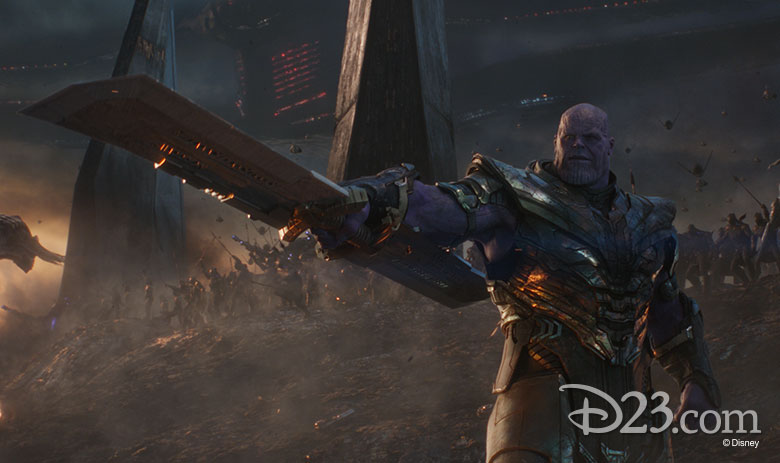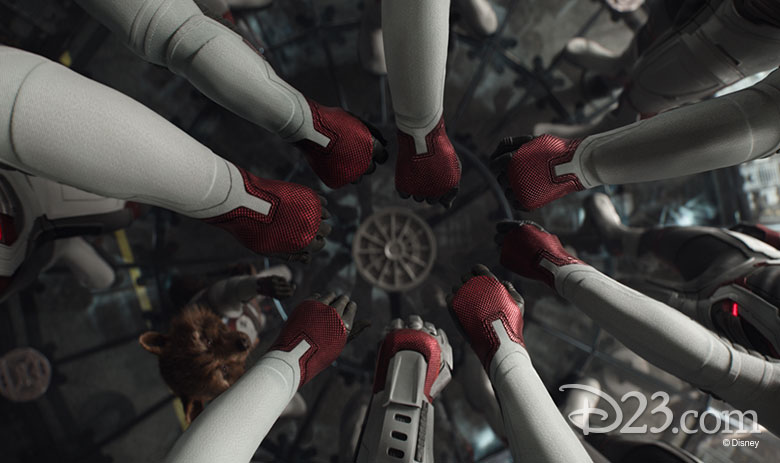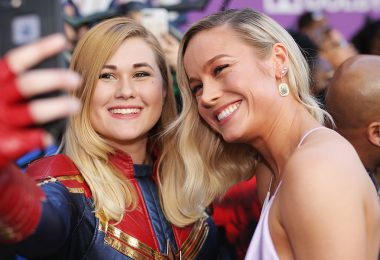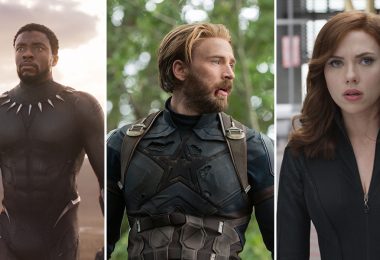By Tim Lammers
Right on the heels of it becoming the highest-grossing film worldwide in box office history with nearly $2.8 billion in ticket sales, the culmination of the first 22 films in the Marvel Cinematic Universe saga, Avengers: Endgame, has made its hotly anticipated debut on Digital, Blu-ray, and 4K Ultra HD (Walt Disney Studios Home Entertainment). D23.com recently talked with Joe Russo about the superhero extravaganza, the fourth MCU film he co-directed with his brother, Anthony, following their direction of Captain America: Winter Soldier, Captain America: Civil War, and Avengers: Infinity War.
Warning: Major spoilers from Avengers: Endgame are ahead.

1. Joe Russo says the strong audience reaction to carnage from Thanos’ finger snap at the end of Avengers: Infinity War took the Russo brothers by surprise, driving the pressure on them to deliver for Avengers: Endgame through the roof.
“The way audiences reacted to the end of the movie was much more significant than we thought it would be,” Russo says. Certainly, we expected a reaction, but the outcry and the outpouring of grief over that ending were dramatic. I know that Mark Ruffalo was in a theater, hiding in a ball cap, watching the film in New York City on opening night with his son, and he said at the end of the movie, the entire theater just sat there for 10 minutes after the movie ended. Finally, he said, a guy got up and started ripping his shirt off and screaming ‘Why! Why would you do this?’ We certainly didn’t expect that kind of reaction. So, all that did was put pressure on us for Endgame to deliver. It was good to get that kind of response because as artists it made us focus on the next chapter.”

2. Avengers: Endgame relies heavily on its time travel narrative, and Russo admits he and his brother initially underestimated how big of an undertaking it would be.
“Time travel was certainly the thing that we had to explain the most to the audience” Russo says. “During reshoots we had to go back and spend quite a bit of time on it to make sure it was clear, because we were working with a very different set of rules than the ubiquitous Back to the Future did and the film’s influence on all time travel stories and pop culture since its debut. We were playing by a different set of rules, and I think we underestimated how influential those Back to the Future rules were and how pervasive they were.
“So, we reshot two scenes—both of which involved Smart Hulk (Mark Ruffalo), Rhodey (Don Cheadle), and Scott Lang (Paul Rudd)—talking about going back in time and how it works, etcetera, so those two scenes, back-to-back, really do a lot of heavy-lifting,” Russo adds. “At the end of the day, time travel is not real—it’s a conceit of genre filmmaking and storytelling—and ultimately this is a science fiction film and there are going to have to be buy-ins. There are no giant green men in life like the Hulk or giant purple aliens like Thanos, so you have to ask audiences to buy in on time travel as a narrative device that helps them solve the story.”
3. Not long after Avengers: Endgame was released in theaters, the Russo brothers revealed that the death of Tony Stark hinged on whether Robert Downey Jr. would sign off on perhaps the biggest scene in the history of the MCU. If he said “No,” however, Russo says he and his brother had a Plan B.
“Our Plan B if he said ‘no’ was to talk him into it, because we felt it was the right thing to do for the story,” Russo says. “We appreciate emotional catharsis as viewers when we watch stories, and we wanted to do something that was impactful and that really underscored what it means to be a hero—and sacrifice is the very definition of being a hero. It means you are willing to put the good of the community ahead of yourself, and who better to exemplify that than Tony Stark?”
Russo adds that considering where Tony’s story began, as a selfish person initially out for himself in Iron Man in 2008, the Avengers: Endgame ending completed the ultimate character arc where he arrived at the ultimate act of selflessness.
“As storytellers, there’s nothing more compelling than taking a character from A to Z, where it is starting in one place and ending in almost the exact opposite place,” Russo says. “That is a real arc and a real journey for a character to take, and a joy for a director to direct and an actor to act. “The Marvel Cinematic Universe is a very singular experiment in movie history, and there’s never been anything quite like it, where you’re taking so many different successful franchises and interweaving them into one large mosaic. There’s never been an opportunity like this on the big screen, and it’s had a profound impact on people.

4. The Avengers: Endgame Home Entertainment release includes six deleted scenes, and Russo says one of the scenes cut from the film—an emotionally powerful sequence where all of the members of the Avengers kneel in honor of Tony Stark after he dies—left the brothers in a huge quandary before they decided to let it go.
“The scene was in and it was out; we watched it a bunch of different times with test audiences, but at the end of the day, of anything that we had cut, it probably was the most difficult decision,” Russo says. “Ultimately, we felt like it was robbing from the scene where everybody was standing on the hill outside Tony’s house, paying their respects to him at his funeral. We wanted to make sure that we weren’t making the ending repetitive or diluting the emotion of the funeral scene.”
5. When the film ends with the reunion of Captain America (Chris Evans) and Agent Peggy Carter (Hayley Atwell), Russo says he and his brother refused to settle for just any ordinary dance and a kiss, and instead wanted a shot where audiences could experience the era of the Golden Age of Hollywood (which, coincidentally, is the same era that the scene is set in).
“Without question, it was about the period. It was about the warmth, the genuineness and the happiness of that kiss,” Russo explains. “It’s symbolic of years lost between them that they both suffered, and they’re finally getting a moment where they can just quietly be with one another. They know that they have a future together now, and that’s what that kiss represents. We shot it that way, starting with that long, slow crane shot across the street to reveal them in the window with the sun shining and flaring into the lens for the final close-up between the two of them. No specific classic screen kiss inspired the scene, but we’ve consumed a lot of movies over the years, so I’m sure subconsciously that the Gone with the Wind kiss was in the back of our heads as we framed up that shot.”





